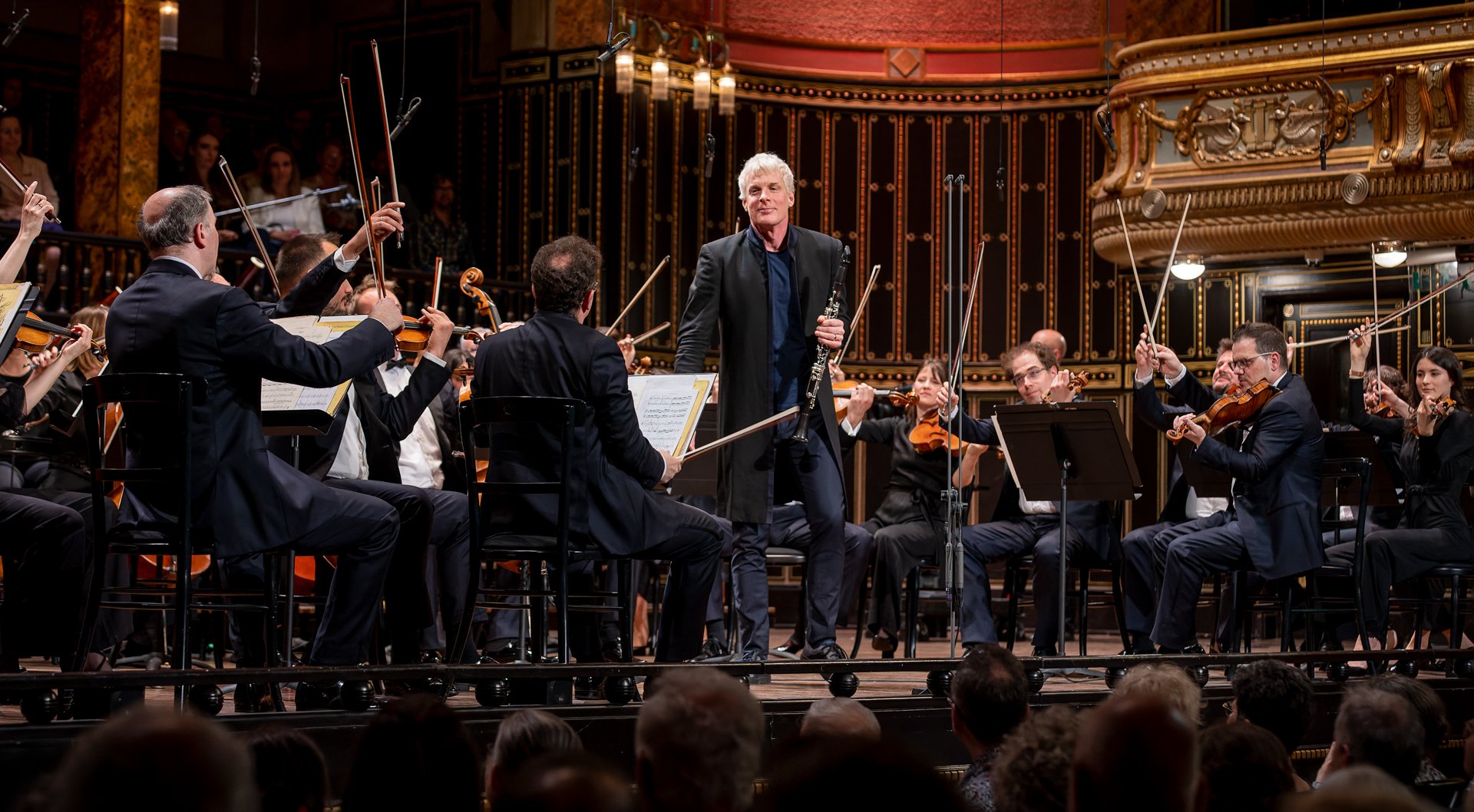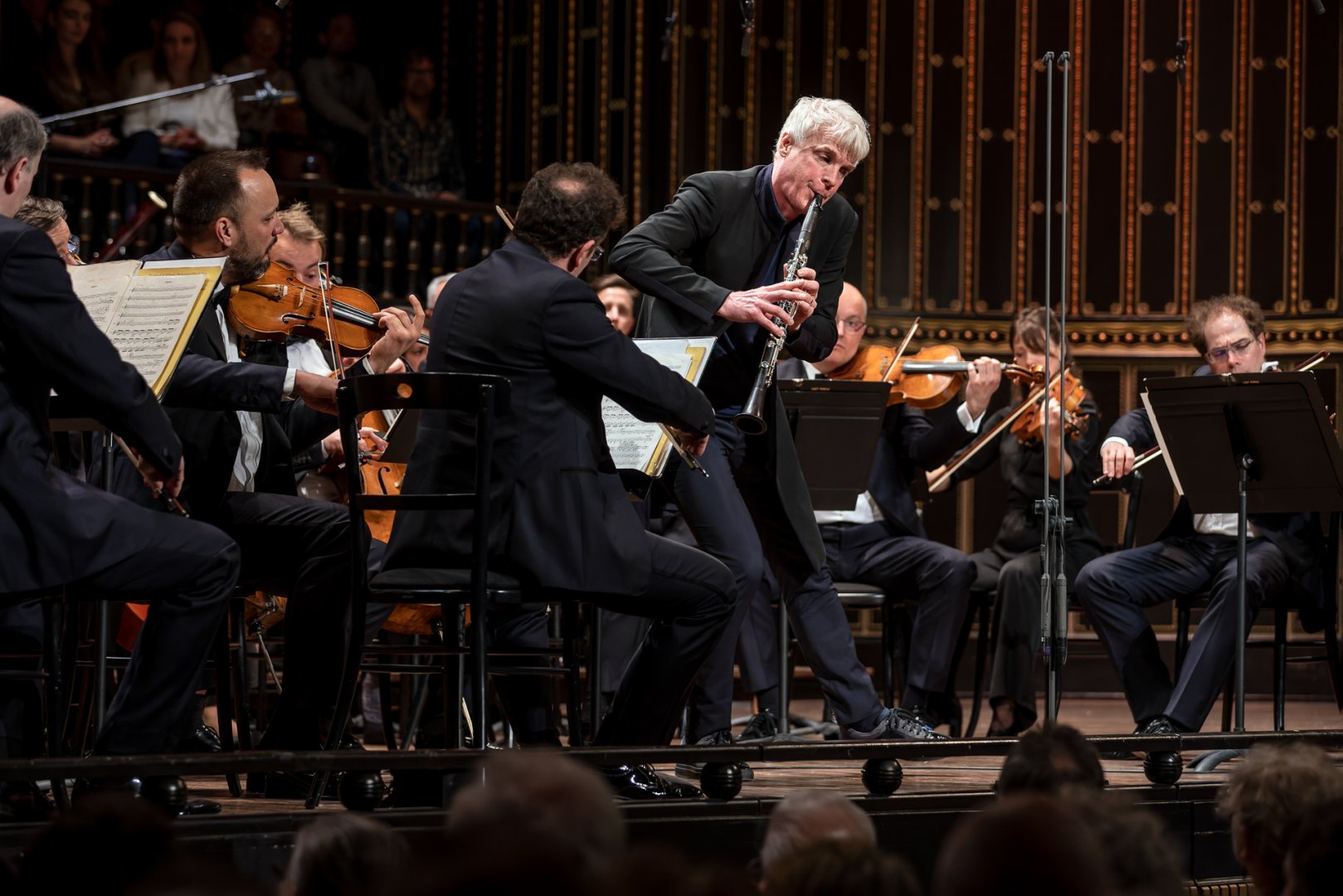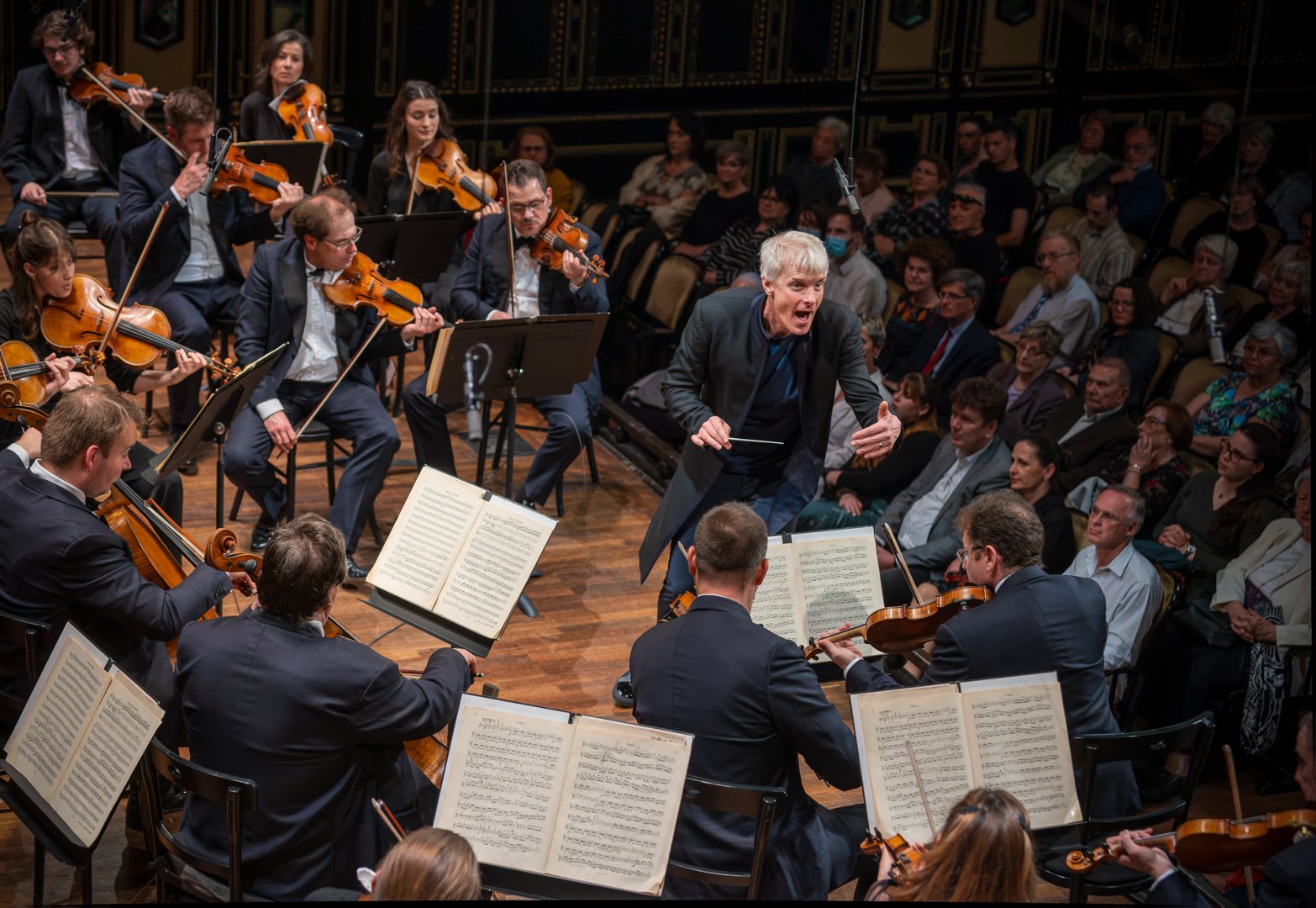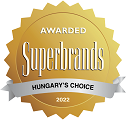The retirement age in Hungary was 60 for a long time, but there is every reason to hope that the Franz Liszt Chamber Orchestra has no plans to retire, either now, in the 60th anniversary year of its foundation, or later. Those who are in such a shape at such an honourable age are better to be active for as long as possible.
The ensemble’s concert at the Academy of Music on 23 April showed both youthful vigour and a good sense of experience – and by that, I don’t mean mechanical routine. Their programme could be considered a traditional orchestral concert with the structure of an overture(like piece) – concerto – symphony, but the evening also recalled FLCO’s very own performance practice: the first piece was performed without a conductor, the second with a soloist (who acted as a conductor as well), the third with a conductor. All this must have brought back fond memories for the older members of the audience and the founding members of the ensemble, three of whom I saw in the audience.
The opening piece, Musica notturna delle strade di Madrid (G. 324; 1780), a series of caricature-like jeremiads, transcribed by the composer from a two-cello string quintet for string chamber orchestras, is a tempting series of extreme depictions. The ensemble resisted the lure of Boccherini’s programme music, and the madrigalisms – ringing bells, stumbling dance, guitar music, the arrival and departure of a procession, etc. – were brought to life with a recognisable but unpretentious, distanced irony, and the subtle humour was palpably understood by the audience, which filled the auditorium and the choir loft. The wide dynamic range of the piece was played with rich nuances, without any forcedness. The final set of variations gave the full experience of “absolute” music without any knowledge of the composer’s programme as well.
Following the initial performance, which could without exaggeration be described as magnificent, there was more of a tense anticipation in the room than the hum of satisfied nods – then again, an audience sounds different when the appearance of an exceptionally talented guest artist is expected. With yet another invitation, the orchestra continued its long-standing tradition paved with the names of Maurice André, Jean-Pierre Rampal, Hansjörg Schellenberger and Emmanuel Pahud (to name but a few wind players), and this time FLCO was joined by the great master of the clarinet, Martin Fröst.

If we agree that Boccherini is tempting you to play uproarious, what can we say about Weber’s clarinet pieces? All three movements of the Concerto in F minor (Op. 73, 1811) pull towards bravura, but if the soloist’s natural medium is virtuoso clarinet playing, he will not be performing a series of acrobatic feats without a safety net, but making music, even playing chamber music with the orchestra whose members are treating him as a rapturous and equal partner. The opening Allegro sounded like an exciting operatic aria, expressing deep emotions but also advancing the plot, in which the soloist happened to be singing on a clarinet. We often listen to operatic arias without knowing exactly what the libretto is saying – this time the Swedish artist played in such a way that the dialogue between the solo instrument and the accompanying ensemble was more than understandable. The second movement, Adagio non troppo, recalled the intimacy of a Schubert song, and the concluding Rondo made us forget any previous experience suggesting that the finale of this concerto is a little too brazen. It is not by any means – it is gently joyous music, its life-affirming quality clear but tastefully restrained. Fröst’s conducting – because he conducted the concerto with one hand, his clarinet or pure body movements – left the impression that all musical problems (and problems in general) could be solved with this apparatus.
The clarinet concerto was greeted by a thunderous applause similar to those we hear at the closing sessions of party congresses, and the enthusiastic audience was able to provoke two encores. First Martin Fröst and the orchestra performed a composition by his brother Göran, or rather an arrangement of his composition rich in klezmer flavours, followed by an improvisation based on Nat King Cole’s Nature Boy, as the whispering of those more educated in jazz revealed.

Both the concerto and the two encores painted the 52-year-old artist as a lanky, lithe adolescent, who moves spontaneously (or consciously? – it doesn’t matter) while playing; especially during the encore, it was as if he was performing a Finnish or South-Swedish dance – dance, after all, should be part of the music, if not artificially distanced.
From what I’ve read about Fröst, we know that he is indeed attracted to all-around artistic solutions. And with his instrumental playing, he claims that playing the clarinet is all too natural and worthwhile, as it is the best thing in the world – while the next best thing is listening to the clarinet.
After the break, similar to the case of the concerto, the orchestra came to the podium with an increased number of musicians. For Mendelssohn’s Italian Symphony No. 4 in A major (Op. 90, 1833), assistance was needed: a wind choir and a thoroughly reinforced string section. This is worth mentioning because the orchestra was temporarily joined by several university students as part of the ongoing Masterclass programme offering students the opportunity and experience of playing and performing in an orchestra.

“The happiest piece I have written so far, especially the last movement,” the composer wrote to his aunt Fanny about the Italian Symphony, and indeed, if one is reluctant to attend classical music concerts, one can hardly do better than to start with this sunny piece. Drifting drive, crisp staccatos and gently sweeping legatos, brisk melodies and a certain airiness characterised the performance under the baton of Martin Fröst. Among the wind players, the courage of Ákos Ács should be highlighted, as he had to perform as first clarinettist under the direction of a clarinet giant, and he did a fine job. And I must also mention Anett Jóföldi’s inspired and beautiful flute playing, which often made us feel that this was the tone and shaping that make one immediately recognise Mendelssohn.
In the opening movement, Allegro vivace, the conductor occasionally accelerated the already fast tempo at the introduction of certain themes and new motifs, which reduced the dramaturgical tension, as if the performer did not believe in the importance of the new material. Where are you running to? – the listener would have asked, convinced that with a clarinet in his hands, such a thing would not happen to Martin Fröst. However, this little detail did not cast a shadow over the performance, especially, since the closing Saltarello could have anyone with poor health dancing.
The evening was a rare combination of wonderful musicianship and wonderful instrumental skills, and the concert shall be remembered for its great atmosphere for a long time.











